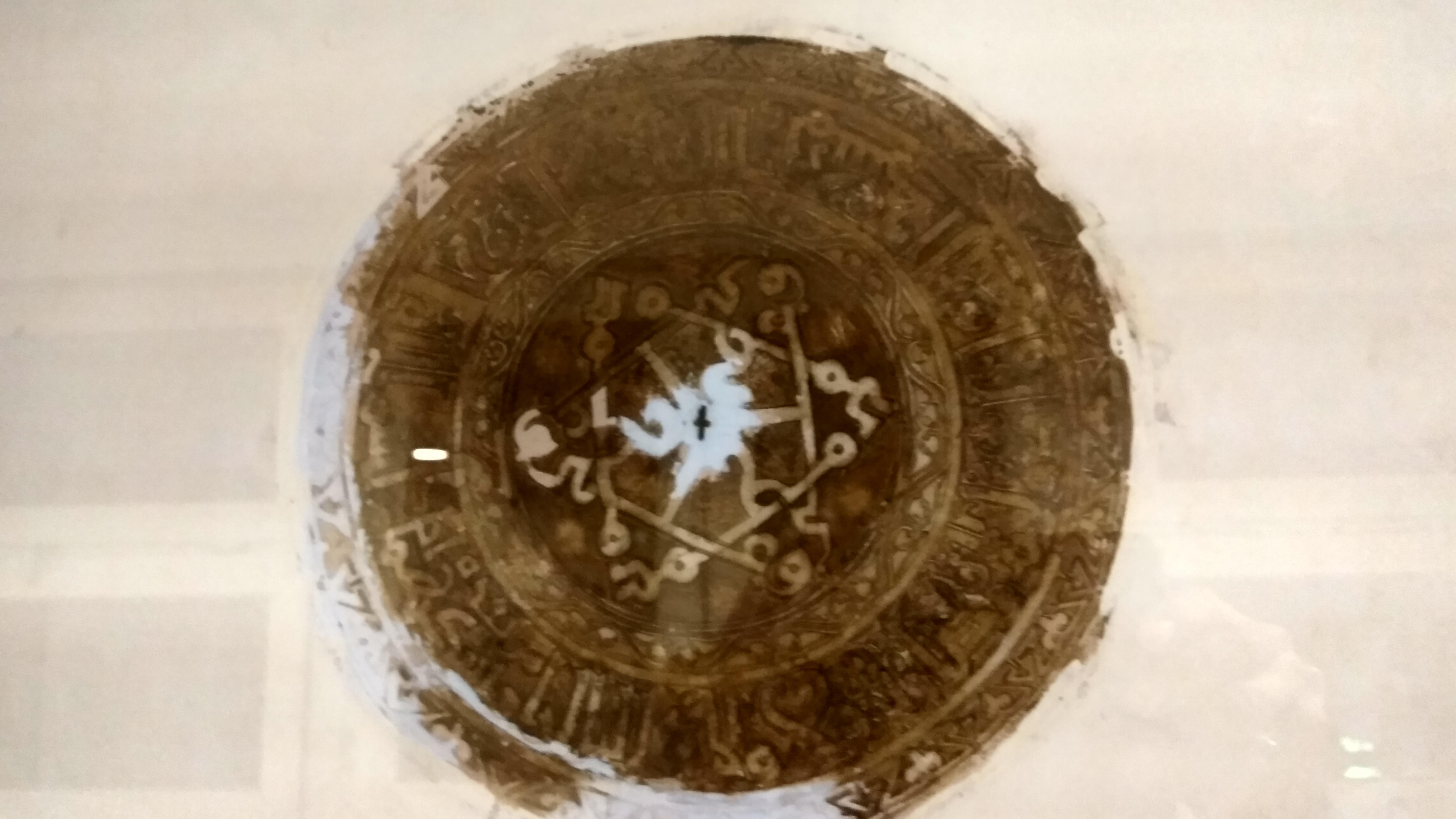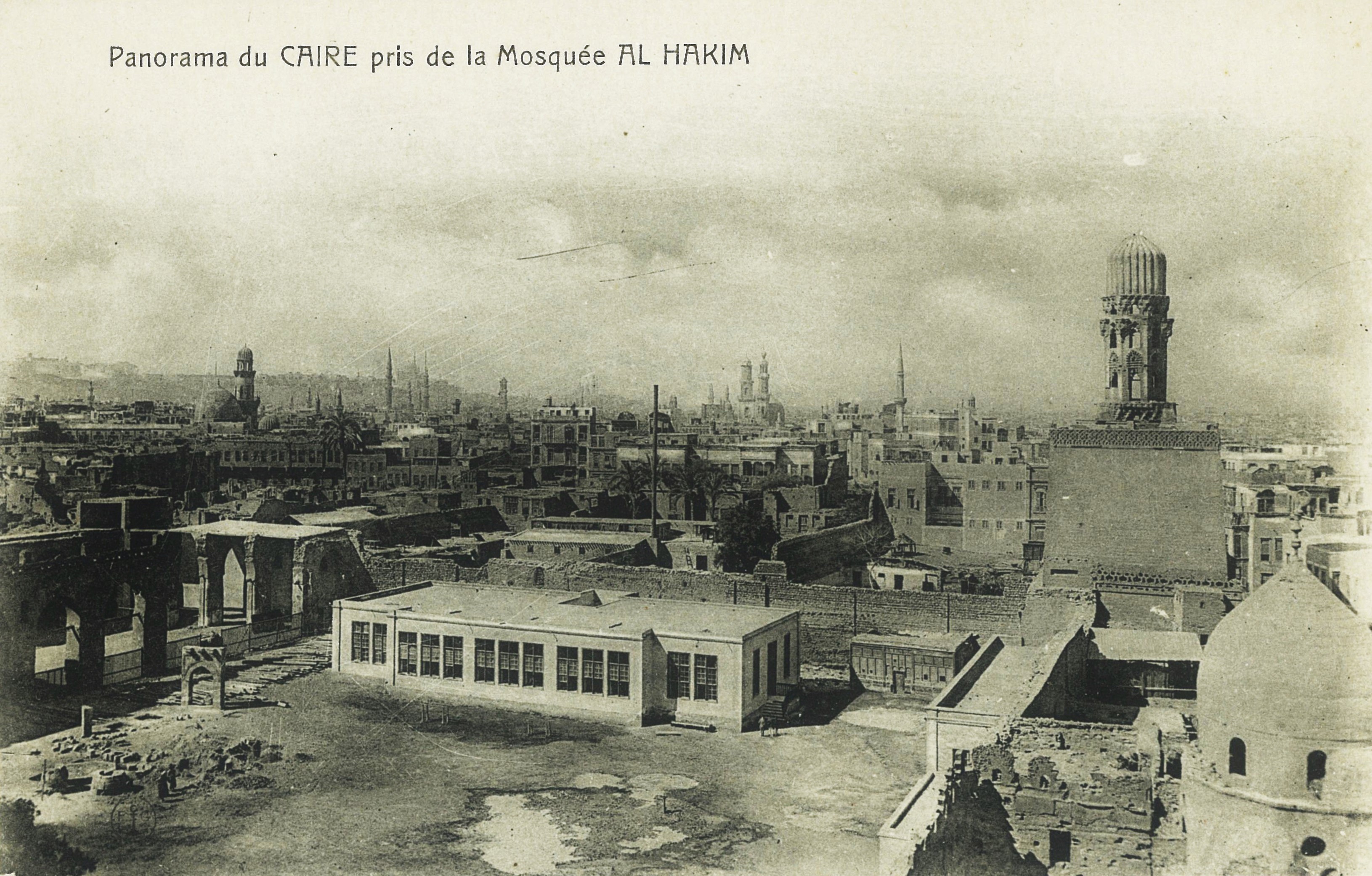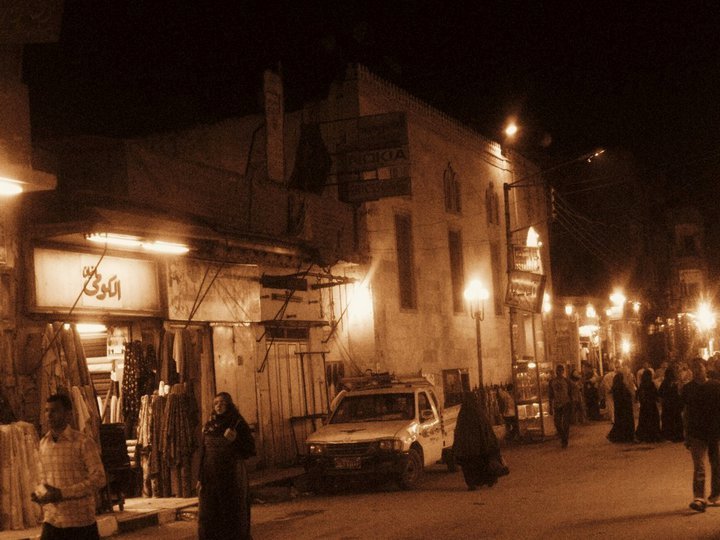|
Juyushi Mosque
The Juyushi Mosque ( ar, الجامع الجيوشى, lit=Mosque of the Armies) was built by the vizier Badr al-Jamali who was ''Amir al-Juyush'' ( ar, امير الجيوش, lit=Commander of the Armies) for the Fatimid Caliphate. The mosque was completed in 478 AH/1085 CE under the patronage of Imam-Caliph al-Mustansir Billah. It was built on an end of the Mokattam to ensure a view of Cairo. In the Ottoman period, the mosque was probably used by Sufis as a monastery. Features The foundation of the mosque has an inscription which identifies the structure as a mazar ( ar, مشهد , lit=shrine). The mosque has one dome and a minaret. There is a small courtyard in the center of the mosque. The entrance is a door to the minaret situated besides the prayer hall. There are 2 rooms, one on each side of the minaret. The minaret is a rectangular shaft with a second receding story. On this, there is a dome similar to the one above the mihrab. The Minaret is embellished with muqarnas cornic ... [...More Info...] [...Related Items...] OR: [Wikipedia] [Google] [Baidu] |
Cairo
Cairo ( ; ar, القاهرة, al-Qāhirah, ) is the capital of Egypt and its largest city, home to 10 million people. It is also part of the largest urban agglomeration in Africa, the Arab world and the Middle East: The Greater Cairo metropolitan area, with a population of 21.9 million, is the 12th-largest in the world by population. Cairo is associated with ancient Egypt, as the Giza pyramid complex and the ancient cities of Memphis and Heliopolis are located in its geographical area. Located near the Nile Delta, the city first developed as Fustat, a settlement founded after the Muslim conquest of Egypt in 640 next to an existing ancient Roman fortress, Babylon. Under the Fatimid dynasty a new city, ''al-Qāhirah'', was founded nearby in 969. It later superseded Fustat as the main urban centre during the Ayyubid and Mamluk periods (12th–16th centuries). Cairo has long been a centre of the region's political and cultural life, and is titled "the city of a thousand m ... [...More Info...] [...Related Items...] OR: [Wikipedia] [Google] [Baidu] |
Muqarnas
Muqarnas ( ar, مقرنص; fa, مقرنس), also known in Iranian architecture as Ahoopāy ( fa, آهوپای) and in Iberian architecture as Mocárabe, is a form of ornamented vaulting in Islamic architecture. It is the archetypal form of Islamic architecture, integral to the vernacular of Islamic buildings that originated in the Abbasid Empire. The muqarnas structure originated from the squinch. Sometimes called "honeycomb vaulting" or "stalactite vaulting", the purpose of muqarnas is to create a smooth, decorative zone of transition in an otherwise bare, structural space. This structure gives the ability to distinguish between the main parts of a building, and serve as a transition from the walls of a room into a domed ceiling. Muqarnas is significant in Islamic architecture because its elaborate form is a symbolic representation of universal creation by God. Muqarnas architecture is featured in domes, half-dome entrances, iwans and apses. The two main types of muqarnas a ... [...More Info...] [...Related Items...] OR: [Wikipedia] [Google] [Baidu] |
Mosque Buildings With Domes
A mosque (; from ar, مَسْجِد, masjid, ; literally "place of ritual prostration"), also called masjid, is a place of prayer for Muslims. Mosques are usually covered buildings, but can be any place where prayers ( sujud) are performed, including outdoor courtyards. The first mosques were simple places of prayer for Muslims, and may have been open spaces rather than buildings. In the first stage of Islamic architecture, 650-750 CE, early mosques comprised open and closed covered spaces enclosed by walls, often with minarets from which calls to prayer were issued. Mosque buildings typically contain an ornamental niche ('' mihrab'') set into the wall that indicates the direction of Mecca (''qiblah''), ablution facilities. The pulpit ('' minbar''), from which the Friday (jumu'ah) sermon (''khutba'') is delivered, was in earlier times characteristic of the central city mosque, but has since become common in smaller mosques. Mosques typically have segregated spaces for men a ... [...More Info...] [...Related Items...] OR: [Wikipedia] [Google] [Baidu] |
11th-century Mosques
The 11th century is the period from 1001 ( MI) through 1100 ( MC) in accordance with the Julian calendar, and the 1st century of the 2nd millennium. In the history of Europe, this period is considered the early part of the High Middle Ages. There was, after a brief ascendancy, a sudden decline of Byzantine power and a rise of Norman domination over much of Europe, along with the prominent role in Europe of notably influential popes. Christendom experienced a formal schism in this century which had been developing over previous centuries between the Latin West and Byzantine East, causing a split in its two largest denominations to this day: Roman Catholicism and Eastern Orthodoxy. In Song dynasty China and the classical Islamic world, this century marked the high point for both classical Chinese civilization, science and technology, and classical Islamic science, philosophy, technology and literature. Rival political factions at the Song dynasty court created strife amongst t ... [...More Info...] [...Related Items...] OR: [Wikipedia] [Google] [Baidu] |
Jafar Us Sadiq Mufaddal Saifuddin
Ja'far us Sadiq Imaduddin ( ar, جـعفـرُ ٱلصَّـادِق عِمـادُ ٱلدِّيـن) or Jafar us Sadiq Mufaddal Saifuddin, is the eldest son of Mufaddal Saifuddin, the current incumbent of the office of the 53rd Dawoodi Bohra Da'i al-Mutlaq, and the grandson of Mohammed Burhanuddin. He is a poet, scholar and one of the four rectors of Aljamea-tus-Saifiyah. Education * He completed the memorization of the Quran in 1999. * ''Al-Faqih al-Jayyid'' (MA) in Islamic Fatemi Literature ( ar, الفقيه الجيد), Aljamea-tus-Saifiyah., 1997. * MA in Arabic literature, ALECSO (Arab League Educational, Cultural and Scientific Organization), 2005. Thesis title: The Receptionist Theory and the Poetry of al-Amir Tamim bin Imam Al-Mu'izz li-Din Allah. * PhD in Arabic Literature, ALECSO (Arab League Educational, Cultural and Scientific Organization), 2013 Research focus: The art and science of dialectic in the works of Syedna al-Mu’ayyad al-Shirazi. Career He is ... [...More Info...] [...Related Items...] OR: [Wikipedia] [Google] [Baidu] |
Lulua Mosque
The Lulua Mosque or al-Lu'lu'a Mosque ( ar, مسجد اللؤلؤة, Masjid al-Lu'lu'a, Mosque of the Pearl) is a mosque in Cairo, Egypt, that was built in 1015–16 AD. It was constructed during the reign of the third Fatimid caliph, al-Hakim, in the Fatimid architectural style. The mosque was almost-fully collapsed in 1919, but was later refurbished in 1998 by the Dawoodi Bohras, who trace their religious lineage to the Fatimid Caliphate's Shia Islam. It is located in the southern cemetery in the Moqattam hills. Geography The mosque is located near the southern cemetery of the Muqattam Hills, a low range of hills to the east of Cairo. It has an average height of with the highest peak at above sea level. It is divided into three sections. The highest segment is a low mountain landform called Moqattam Mountain. It was an important ancient Egyptian quarry site for limestone, used in construction of mosques and churches. The Lulua Mosque was also built with this limestone. Th ... [...More Info...] [...Related Items...] OR: [Wikipedia] [Google] [Baidu] |
Aqmar Mosque
The Aqmar Mosque (), was built in Cairo, Egypt, as a neighborhood mosque by the Fatimid vizier al-Ma'mun al-Bata'ihi in 1125-6 CE (519 Hijri). The mosque is situated on what was once the main avenue and ceremonial heart of Cairo, known today as al-Mu'izz Street, in the immediate neighborhood of the former Fatimid caliphal palaces. The mosque is an important monument of Fatimid architecture and of historic Cairo due to the exceptional decoration of its exterior façade and the innovative design of its floor plan. History The mosque was built by the Fatimid vizier al-Ma'mun al-Bata'ihi, who served in this position from 1121 to 1125 under the Caliph al-Amir. He served during a period of great political and spiritual crisis for the Fatimid Caliphate, not long after the sudden incursion of the First Crusade. He initiated a number of reforms and revived the ceremonial aspects of the caliphate, both at court and in public. He also conducted other constructions and renovations ins ... [...More Info...] [...Related Items...] OR: [Wikipedia] [Google] [Baidu] |
Al-Hakim Mosque
The Mosque of al-Hakim ( ar, مسجد الحاكم بأمر الله, Masjid al-Ḥākim bi Amr Allāh), nicknamed al-Anwar ( ar, الانور, lit=the Illuminated), is a historic mosque in Cairo, Egypt. It is named after Al-Hakim bi-Amr Allah (985–1021), the sixth Fatimid caliph and 16th Ismaili Imam. Construction of the mosque was originally started by Caliph al-'Aziz, the son of al-Mu'izz and the father of al Hakim, in 990 AD. It was completed in 1013 by al-Hakim, which is why it is named after him. The mosque is located in Islamic Cairo, on the east side of al-Mu'izz Street, just south of Bab al-Futuh (the northern city gate). In the centuries since its construction the mosque was often neglected and re-purposed for other functions, eventually falling into ruin. A major restoration and reconstruction of the mosque by the Dawoodi Bohras was completed in 1980, reopening it for religious use. History Fatimid construction and modifications The mosque's construction was i ... [...More Info...] [...Related Items...] OR: [Wikipedia] [Google] [Baidu] |
List Of Mosques In Egypt ...
There are 114,000 mosques in Egypt as of 2016, of which 83,000 are affiliated with the Ministry of Endowments. This list includes notable mosques within Egypt. See also * Islam in Egypt * Lists of mosques ** List of mosques in Cairo References {{list of mosques Egypt Mosques A mosque (; from ar, مَسْجِد, masjid, ; literally "place of ritual prostration"), also called masjid, is a place of prayer for Muslims. Mosques are usually covered buildings, but can be any place where prayers ( sujud) are performed, i ... [...More Info...] [...Related Items...] OR: [Wikipedia] [Google] [Baidu] |
List Of Mosques In Africa
This is a list of mosques in Africa. See also * Islam in Africa * Lists of mosques References {{List of mosques Lists of mosques, !Africa Mosques in Africa, * Lists of religious buildings and structures in Africa, Mosques ... [...More Info...] [...Related Items...] OR: [Wikipedia] [Google] [Baidu] |





